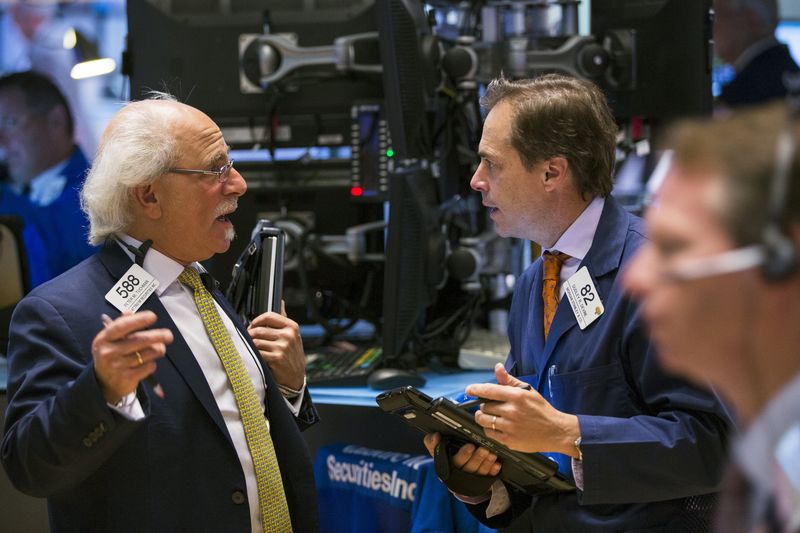Investing.com - Here are the top five things you need to know in financial markets on Tuesday, September 26:
1. Yellen leads busy day of Fed speakers
Investors looked ahead to fresh comments from Federal Reserve Chair Janet Yellen for greater signs on the timing of the next rate hike.
The Fed chair is due to deliver a speech titled "Inflation, Uncertainty, and Monetary Policy" at the National Association for Business Economics' Annual Meeting in Cleveland at 12:45PM ET (1645GMT).
In addition to Yellen, Cleveland Fed President Loretta Mester and Governor Lael Brainard will also make public appearances during the day.
Besides the Fed, market players will also focus on CB consumer confidence data and a report on new home sales both due at 10:00AM ET (1400GMT) to gauge how it will impact monetary policy.
The dollar index, which tracks the greenback's strength against a basket of six major currencies, tacked on 0.2% to reach a three-week high of 92.64.
Last week, the U.S. central bank announced it would begin trimming down its $4.5 trillion in assets and signaled it will likely raise rates again this year.
Interest rate futures are now pricing in about a 70% chance of a December Fed rate hike according to Investing.com's Fed Rate Monitor Tool.
2. Macron to lay out vision for Europe
French President Emmanuel Macron will lay out his plans for ambitious European reforms in a landmark speech when he speaks at the Sorbonne University in Paris at 1300GMT (9:00AM ET).
Macron will insist that “a more integrated Europe” is the path to “real sovereignty” for its peoples, Elysée aides said.
The French leader is expected to propose a separate budget, a finance ministry and a European monetary fund for the euro zone and stress that a deeper economic and monetary union is needed between EU member states.
His speech comes after the German election on Sunday, where the far-right AfD party made big gains amid a small victory for Chancellor Angela Merkel, which would likely complicate plans for a more integrated euro zone.
The euro slipped as far as 1.1810 against the dollar, its weakest since Aug. 25, after falling around 0.9% on Monday - its heaviest one-day loss since December.
3. Oil slips after entering bull market territory
Crude oil prices edged lower, but remained close to multi-month highs as traders cheered ongoing signs that the market is starting to rebalance.
U.S. crude futures dipped around 0.5% to $51.98 a barrel. It traded as high as $52.43 intraday, a level last seen since April 19.
Meanwhile, Brent crude futures, the benchmark for oil prices outside the U.S., shed 0.7% to $58.03. It reached a 26-month peak of $58.88 earlier in the session.
Oil prices have gained roughly 20% from their June lows, meeting the definition of a bull market, as data showed strong compliance from major producers with their supply cut agreement and as talk grows of a likely extension of the deal.
Turkey's threat to cut off a major pipeline that carries oil from from Iraq's Kurdistan region to the outside world provided further support.
Industry group the American Petroleum Institute is due to release its weekly report at 4:30PM ET (2030GMT), as traders continue to weigh what the impact of recent storm activity was on supply and demand.
4. Global stock markets attempt to stabilize
Global stock markets attempted to stabilize, one day after suffering heavy losses amid an escalating war of words between North Korea and the U.S.
North Korea's foreign minister said President Donald Trump had declared war on the hermit state and that Pyongyang reserved the right to take countermeasures, including shooting down U.S. bombers even if they are not in its air space.
White House spokeswoman Sarah Saunders later denied the U.S. had declared war and called the suggestion "absurd".
Asian shares closed on a relatively mixed note, with benchmarks in Tokyo and Seoul edging lower, while Shanghai ended higher.
In Europe, shares drifted between gains and losses in directionless mid-morning trade.
Meanwhile, U.S. stocks pointed to a muted open on Wall Street, with the blue-chip Dow and S&P 500 futures little changed, while the tech-heavy Nasdaq 100 futures pointed to a gain of around 0.1% when the market opens.
5. Havens lose their shine
Traditional safe haven assets like gold, the yen and Swiss franc were all lower, paring their strong gains from the prior session as investor concerns over a standoff between the U.S. and North Korea eased.
Gold prices fell back around 0.2% to $1,309.62 a troy ounce, one day after surging 1.1% to a one-week high.
Meanwhile, the dollar was flat against the yen at 111.72, after coming off a high of 112.53 the previous day.
The Swiss franc, also sought in times of geopolitical tensions, was down 0.4% at 0.9705 against the dollar after gaining almost 0.5% a day earlier.
Investors also scaled back purchases of global bonds, pushing U.S. Treasury and German Bund yields higher.
